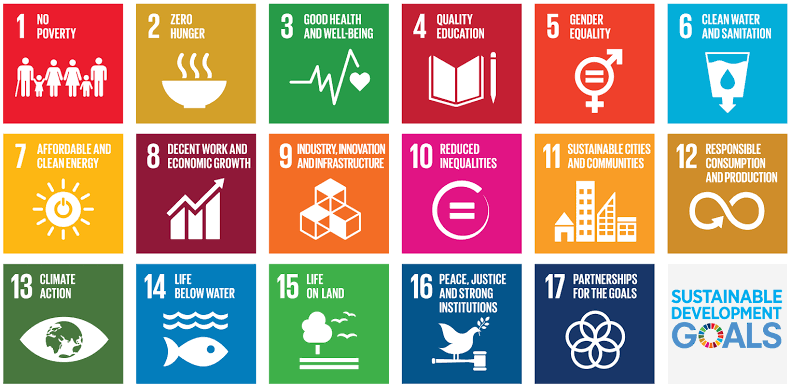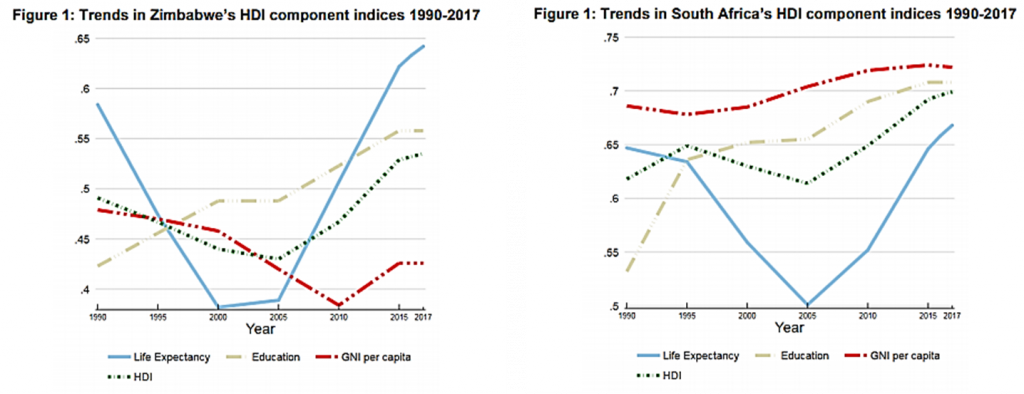<< Lesson 2
Lesson 4 >>
Lesson Overview – this lesson discusses the Sustainable Development Goals (SDGs) and the Human Development Index (HDI)
2.4 ASSESSING DEVELOPMENTAL PROGRESS
If you get on the internet today and look up the Gross Domestic Product (GDP) of different countries, as well as the population adjusted figures (GDP per capita) you can surely get a sense of living standards. However as far as Development Economics is concerned, GDP per capita or its respective year on year growth is not enough. This is for the simple reason that Economic Growth does not equal Economic Development. Economic growth is not enough to result in development, although it is a necessary cog in the equation. Economic growth is a real increase in a nation’s income/output. The technical term for Economic growth is GDP growth. GDP is the value of all goods and services produced in the domestic economy. GDP per capita is arrived at by dividing GDP by the total population. Economic growth can result from a number of things – and technology is one of them. To illustrate the concept of technology driven economic growth an Economics concept called the Production Possibilities Curve (PPC) or Production Possibilities Frontier (PPF) will be discussed in the Sources of Growth topic.
Science organizations and the civic sector in general need more appreciation of these concepts in order to make the most impact on development. But, the question on how to assess development still remains. For starters, one might consider to use the Sustainable Development Goals (SDGs) as a benchmark.
2.4.1 THE SUSTAINABLE DEVELOPMENT GOALS

Figure 1 Sustainable Development Goals
The United Nations (UN) Sustainable Development Goals (SDGs) are an important guiding compass in planning and implementing development goals (see Figure 1). Organizations can rely on the SDGs to set their developmental agenda, re-focus their ambitions (get back to the drawing board) as well as correct courses based on them. The17 broad SDGs comprise more detailed targets and indicators, visit https://sustainabledevelopment.un.org/sdgs for a more detailed description.
2.4.2 THE HUMAN DEVELOPMENT INDEX (HDI)
Science organizations can use the SDGs as a framework for assessing progress of their development activities. However, in assessing the development progress of societies and countries, the Human Development Index (HDI) is an important metric. “The HDI was created to emphasize that people and their capabilities should be the ultimate criteria for assessing the development of a country, not economic growth alone” (UNDP, 2019). HDI is a “summary measure of average achievement in key dimensions of human development: a long and healthy life, being knowledgeable and having a decent standard of living” (UNDP, 2019). “HDI is the geometric mean of normalized indices for each of the three dimensions” of health, education and standard of living. Figure 2 shows the HDI components.

Figure 2 HDI Components

Figure 3 HDI for Zimbabwe and South Africa
With HDI (see Figure 3), it is possible for a country with very bad economic fortunes to have a relatively good HDI. In Figure 3, despite years of economic malaise (see the broken red line in Panel A), HDI actually increased around the year 2006 for Zimbabwe. In 2017, the HDI for Zimbabwe was around 0.54, while South Africa’s one was about 0.7. The point to note here is that South Africa’s GDP is more than ten-fold that of Zimbabwe, yet the gap in HDI is quite small. This therefore emphasizes the point that GDP is not everything – yet it is important.
Activity 2
Think about how we can change the development challenges described in this section into opportunities.
Some hints
| Challenge | Probable solution |
| High Marginal Productivity of Capital | all the more reason to import capital |
| Low labour productivity | As scientists we can empower communities through training |
| Poor Institutions | Innovative solutions such as e-governance |
| Imperfect Markets | Use technology/coding skills to make information more available |
| Low technology proliferation | Teach communities skills/new technologies |
<< Lesson 2
Lesson 4 >>
